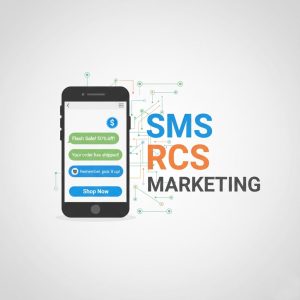Mobile App Monetization Strategies: Maximizing Revenue in 2025

The Evolution of Mobile App Monetization
The mobile app economy continues to thrive in 2025, with global app revenue projected to exceed $270 billion this year. For developers and businesses alike, selecting the right monetization strategy has become more crucial than ever in an increasingly competitive landscape. With over 5 million apps available across app stores, simply creating a great app is no longer enough—you need a sophisticated approach to generate sustainable revenue.
In this comprehensive guide, we’ll explore the most effective mobile app monetization strategies that balance profitability with optimal user experience. Whether you’re launching a new app or optimizing an existing one, these approaches will help you maximize your app’s revenue potential while keeping users engaged and satisfied.
Understanding App Monetization: Key Considerations
Before diving into specific strategies, it’s important to understand the key factors that influence monetization success:
- User Demographics – Different audiences respond differently to monetization methods
- App Category – Gaming apps monetize differently than productivity tools
- User Experience – Revenue methods should complement, not compromise, the core app experience
- Market Positioning – Premium vs. mass-market approaches require different strategies
- Platform Specifics – iOS and Android users exhibit different spending behaviors
According to App Annie’s State of Mobile 2025 Report, apps that align their monetization strategy with these factors see up to 40% higher revenue per user. Let’s explore the most effective approaches.
Strategy 1: Subscription Models – The Revenue Backbone
Subscription-based monetization has emerged as the dominant revenue model for apps across nearly all categories. This approach offers several advantages:
Why Subscriptions Work
- Predictable Revenue – Recurring payments create a stable income stream
- User Commitment – Subscribers tend to be more engaged and loyal
- Value-Based Pricing – Ability to charge based on ongoing value delivery
- Improved Metrics – Higher lifetime value (LTV) compared to one-time purchases
Subscription Best Practices
To maximize subscription conversion and retention:
- Offer a free trial period (7-14 days optimal)
- Create multiple tiers with clear value differentiation
- Provide annual subscription options with a discount (typically 15-20%)
- Implement strategic cancellation flows with win-back offers
Our data shows that apps with subscription models generate approximately 3-4x more revenue per user than those relying solely on advertising or one-time purchases.
Strategy 2: In-App Purchases – Flexible Monetization
In-app purchases (IAPs) remain a cornerstone of app monetization, particularly for gaming and content-based applications. They offer flexibility in how users can spend within your app.
Types of In-App Purchases
- Consumable Items – Single-use purchases like game currency or extra lives
- Non-Consumable Items – Permanent features or content unlocks
- Content Subscriptions – Access to premium content for a period
- Premium Upgrades – One-time payment to unlock advanced features
Optimizing IAP Strategy
- Implement a balanced in-app economy with multiple price points
- Create artificial scarcity where appropriate
- Use limited-time offers to drive conversion
- Design clear value propositions for each purchase
According to research from AppsFlyer’s Monetization Report, apps with a strategic mix of both consumable and non-consumable IAPs see 35% higher ARPU (Average Revenue Per User) than those offering only one type.
Strategy 3: Advertising – Refined Approaches
Mobile advertising continues to evolve, with more sophisticated formats designed to minimize disruption while maximizing revenue.
Advanced Ad Formats
- Rewarded Videos – Users opt-in to view ads in exchange for in-app rewards
- Native Ads – Advertisements that match the look and feel of the app
- Playable Ads – Interactive mini-game experiences within the ad
- Offerwalls – Curated offers that users can complete for rewards
Ad Implementation Best Practices
- Segment users to show different ad frequencies based on engagement
- Use rewarded videos as an alternative to IAPs for non-paying users
- Test ad placements to find natural breaks in the user experience
- Consider user progression before triggering ads
Apps that implement contextually relevant advertising experiences report up to 3x higher eCPMs (effective cost per thousand impressions) compared to generic implementations.
Strategy 4: Freemium Model – The Balanced Approach
The freemium model continues to be a powerful strategy, offering basic functionality for free while charging for premium features.
Structuring a Successful Freemium Strategy
- Provide genuine value in the free version
- Create clear upgrade paths with compelling benefits
- Design feature limitations that naturally lead to upgrades
- Implement gentle, value-focused upgrade prompts
Freemium Conversion Optimization
- Use progressive onboarding to showcase premium features
- Implement analytics to identify conversion trigger points
- Test different paywall designs and messaging
- Create FOMO (Fear of Missing Out) through limited access
According to mobile app development trends at MobileDominate.com, apps with well-designed freemium models typically convert 2-5% of users to paying customers, with top performers reaching 8-10%.
Strategy 5: Premium Apps – The Direct Approach
While less common than freemium, the premium (paid download) model remains viable for certain app categories, particularly professional tools and specialized utilities.
When Premium Makes Sense
- Apps with clear professional or productivity value
- Strong brand recognition or established user base
- Highly specialized functionality with limited competition
- Strong value proposition that can be communicated before download
Premium App Pricing Strategies
- Price based on competitive analysis and value delivery
- Offer limited-time discounts for launch or special events
- Consider platform-specific pricing differences
- Test price elasticity to find optimal conversion points
Despite the dominance of free apps, premium apps still account for approximately 7% of app store revenue, demonstrating continued viability in specific niches.
Strategy 6: Hybrid Monetization – Maximizing Revenue
Increasingly, the most successful apps are implementing hybrid monetization strategies that combine multiple revenue streams.
Effective Hybrid Combinations
- Freemium + Advertising – Free users see ads; paid users get ad-free experience
- Subscription + IAP – Core features via subscription; premium content as add-ons
- Tiered Subscription + Advertising – Different ad experiences across subscription tiers
- Freemium + Sponsorships – Free features supported by brand partnerships
Implementing Hybrid Models
- Segment users based on spending patterns and preferences
- Design clear user journeys across different monetization touchpoints
- Avoid cannibalizing revenue streams
- Test monetization mixes to find optimal combinations
According to data from MobileDevMemo’s Industry Analysis, apps with properly implemented hybrid monetization models average 30% higher ARPDAU (Average Revenue Per Daily Active User) than single-strategy apps.
Strategy 7: Indirect Monetization – Beyond Direct Revenue
Some apps successfully monetize through indirect methods that support broader business objectives.
Indirect Monetization Approaches
- Lead Generation – Capturing qualified leads for other products/services
- E-commerce Integration – Facilitating product purchases
- Data Monetization – Collecting and leveraging (anonymized) user data
- Affiliate Marketing – Earning commissions from referred purchases
Implementing Indirect Monetization
- Create clear value exchange for users
- Ensure transparent data practices and privacy compliance
- Design seamless integration with primary business models
- Track attribution effectively to measure true ROI
While harder to quantify, indirect monetization can provide significant value, particularly for apps connected to broader business ecosystems.
Strategy 8: Emerging Monetization Trends
The mobile app monetization landscape continues to evolve, with several emerging trends showing promise for 2025 and beyond:
New Revenue Opportunities
- Web3 Integration – Blockchain-based ownership and rewards
- Super Apps – Ecosystem monetization through mini-apps
- Creator Economies – User-generated content with revenue sharing
- AI-Driven Personalization – Customized monetization based on user behavior
These approaches remain experimental but offer significant growth potential for apps looking to differentiate their revenue strategies.
Conclusion: Building Your Monetization Strategy
The most successful app monetization approach will ultimately depend on your specific app, audience, and business objectives. Consider these final recommendations as you develop your strategy:
- Test Multiple Approaches – Data should drive your monetization decisions
- Focus on User Experience – Revenue should enhance, not detract from, core value
- Evolve Over Time – Adapt strategies as your app matures and grows
- Monitor Key Metrics – Track ARPU, LTV, retention, and conversion rates
- Consider Cultural Differences – Monetization preferences vary by region
By thoughtfully implementing these strategies while maintaining a user-first approach, you can create sustainable revenue streams that support your app’s long-term growth and success.
Remember that the most effective monetization is built on delivering genuine value. As the mobile app ecosystem continues to mature, users have become increasingly sophisticated in evaluating the value exchange they receive. Apps that align monetization with meaningful user benefits will continue to thrive in this competitive landscape.








